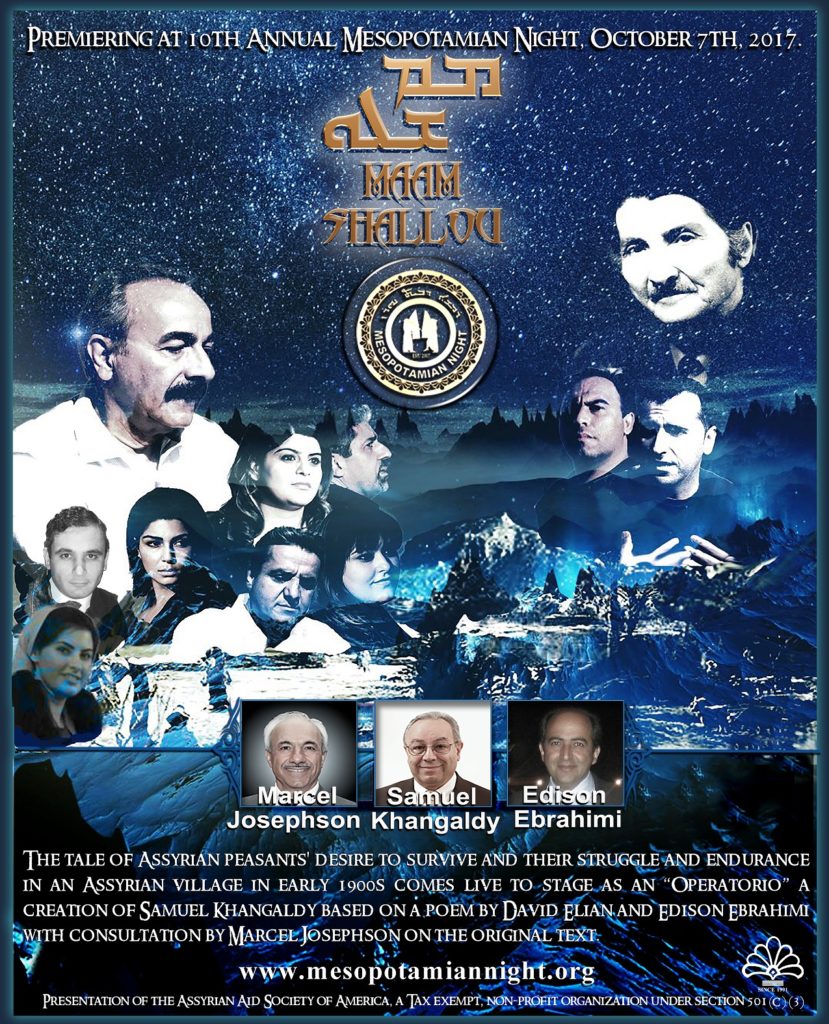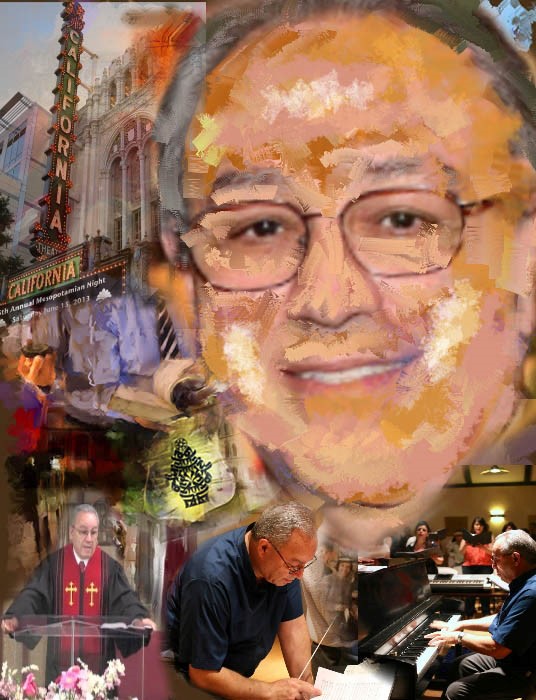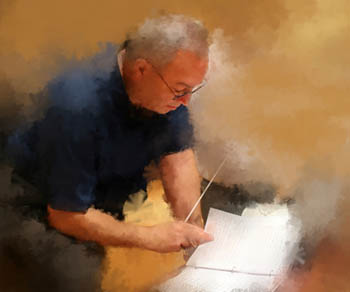
Rev. Samuel Khangaldy by all accounts is a prolific musician and composer. He has tirelessly contributed to the Mesopotamian Night project, through original compositions, orchestration for symphony orchestra, and coaching of choir group since 2009. His major original compositions commissioned by our team are the following: the overture for Gilgamesh Oratorio, the Tragedy of Badri, the New Mesopotamia Choir song and now his latest the Maam Shallou Operatorio to be premiered on October 7, 2017 at the California Theater in San Jose.
 When the Mesopotamian Night team showed me the Maam Shallou poem, it seemed very simplistic to me at first glance. This did not disappoint me because many operas also have a simple story. As I dove deeper into the poem, I realized the writer, David Elian, echoed a deeper perspective. He reflected on the struggle of his people to survive, and depicted the class divide between the Assyrian peasants and their non-Assyrian feudal overlords.
When the Mesopotamian Night team showed me the Maam Shallou poem, it seemed very simplistic to me at first glance. This did not disappoint me because many operas also have a simple story. As I dove deeper into the poem, I realized the writer, David Elian, echoed a deeper perspective. He reflected on the struggle of his people to survive, and depicted the class divide between the Assyrian peasants and their non-Assyrian feudal overlords.
Once we took upon putting the poem into a performing stage, we realized that the original story had a hopeless ending, resulting in the expulsion of Assyrian villagers (men and women, young and old) from their lands. The original story matched with real life experience of the writer, David Elian, who as a child had to flee from his village in the mountains of Hakiari in south Eastern Turkey to Ganja, Azerbaijan. However, we concluded that our final product needed to spin the story and end with real hope. That is where our Mesopotamian Night team member, Edison Ebrahimi, came in and utilized his poetic talent to bring the story to a more hopeful ending, by demonstrating there is always a way to endure by pushing back evil and oppression.
 For this composition, I came up with a new word “Operatorio” meaning that the work is a combination of an oratorio and an opera. The orator will recite many parts of the poem while the orchestra plays the music. Singers, on the other hand, will sing and act many other parts like in an opera.
For this composition, I came up with a new word “Operatorio” meaning that the work is a combination of an oratorio and an opera. The orator will recite many parts of the poem while the orchestra plays the music. Singers, on the other hand, will sing and act many other parts like in an opera.
The choir members and the soloists needed to start their practice while the composition was in its early stages. Therefore, I wrote the six choral pieces sung in this operatorio first (two women’s choir pieces and four pieces for mixed choir SATB voices). Next, I worked on the solo parts for nine soloists. Orchestrating the composition was the final task. It took four months to complete this music and submit it to the team. Most verses of the poem are quarrelsome and argumentative, but I still tried to express them through plain melodic motifs to suit the tone of the singers for each story line. Instead of using folk tunes we have inherited from our older generation, I wrote new melodies to create music that sounds fresh to the ears.
All verses of the Maam Shallou poem are made of five syllable lines. This limited me to write the music based on five syllable musical measures, varied in tempo and tone, according to what the characters are communicating with each other or the audience. This constant change in the tempo throughout the music makes it difficult for singers to perform and the conductor to conduct.
Maam Shallou Operatorio is written for choir, soloists, and symphony orchestra and I hope it will delight the listeners and create a memorable night for everyone.
